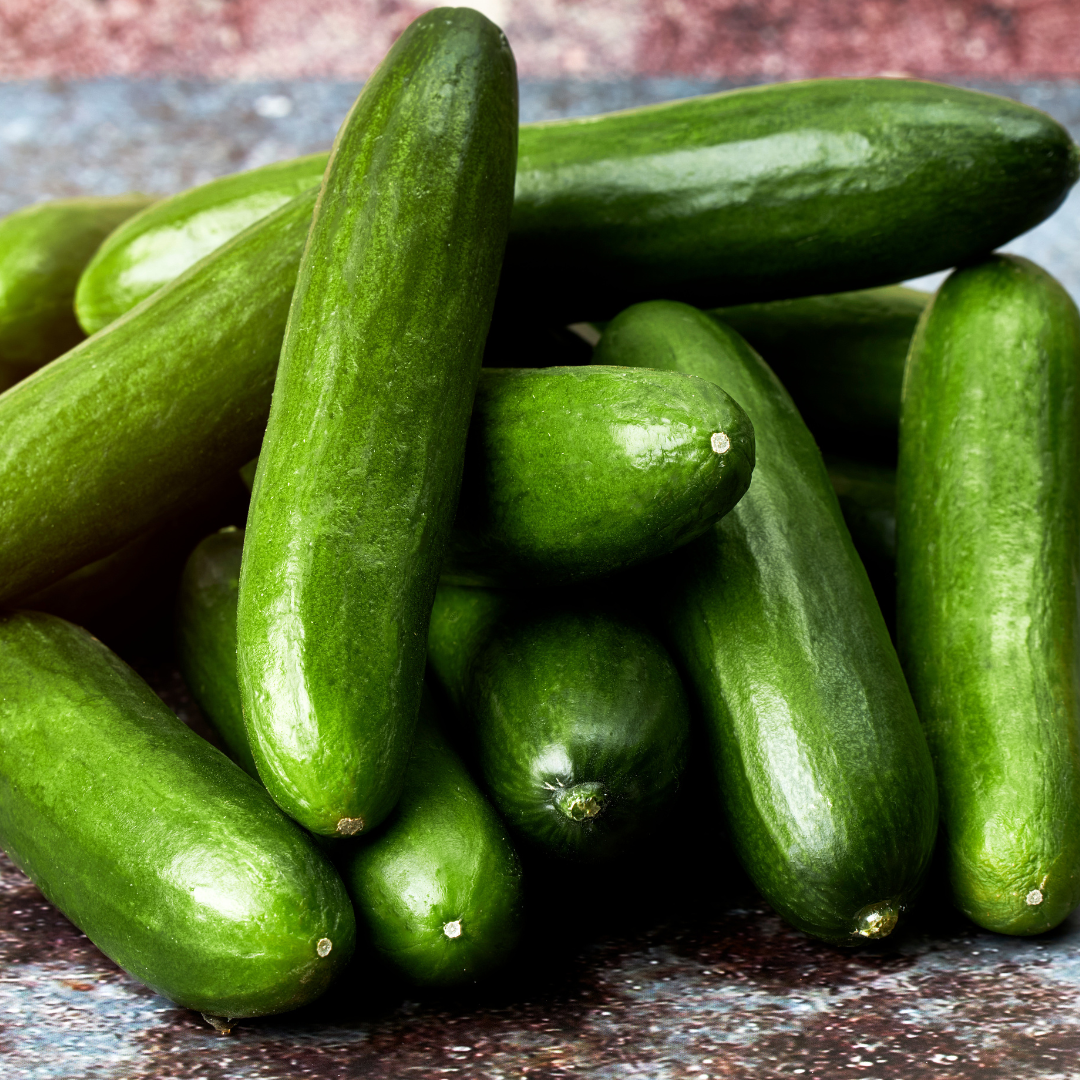Katrina Cucumber Seed
Katrina Cucumber Seed
Couldn't load pickup availability
Seed Type
Seed Type
F1 Hybrid (Untreated)
Seeds Per Pack
Seeds Per Pack
10
Days to Maturity
Days to Maturity
50
Disease Resistance
Disease Resistance

Why Grow Katrina Cucumber?
Super-Productive Katrina cucumber is an extremely-productive mini-cucumber variety known for its disease resistance and ability to set fruit in hot conditions. This variety is parthenocarpic, meaning it doesn't require pollination. It's also gynoecious, which means it produces all female flowers. The result is a super-productive cucumber variety that produces 3-4 fruits per node.
Uniform, Seedless Cucumbers Katrina cucumbers are seedless and have a thin skin which is perfect for slicing raw, snacking, and adding to salads. These are best harvested around 6" long and are known for their uniformity. They also perform well under heat stress and will continue to set fruit well into the summer months. This makes it a great option for early, mid, and late season plantings because the plants are more resilient compared to other specialty cucumber varieties.
Katrina Cucumber Growing Tips
• When to Plant Cucumbers
Cucumbers are a warm season vegetable that should be planted after the risk of frost has passed in early spring. In many regions cucumbers can be grown throughout the entire warm growing season. In climates with intense summer heat, disease-resistant varieties are preferable for growing in the middle of summer.
Cucumber seeds should be directly sewn in the garden. Plant seeds approximately 1/2" deep and water well to encourage fast germination. Cucumbers can be planted 4-6" apart when grown vertically on a trellis, although some gardeners prefer to give each plant more space for ease of harvesting.
A trellis is not an absolute necessity when growing cucumbers, but it will make harvesting easier and allow you to grow more plants in a given space. Growing them vertically will keep the plants off the ground and provide for cleaner, higher-quality fruits.
To see how to make an easy cucumber trellis, watch this video.
• How to Fertilize Cucumbers
It's always a good idea to apply some pre-plant fertilizer to the soil when planting cucumbers. We like to add Coop Gro organic fertilizer in the planting furrow or over an entire raised bed before planting. This ensures the plants have the right nutrients to put down roots in their new soil.
Fruiting vegetables like cucumbers will benefit from something called "spoon feeding." This process involves frequent fertilizations at lower concentrations, as compared to fertilizing them heavily once.
Once your cucumber plants start to develop their second and third set of leaves, feed them every 2-3 weeks with a relatively balanced fertilizer. We like to sprinkle Coop Gro around the plants or make a liquid solution of AgroThrive Fruit & Flower and pour that alongside the plants. Healthy, dark green cucumber plants will be more tolerant of pest and disease pressure as they grow.
• When to Harvest Cucumbers
Cucumbers will require harvesting at least every three days. During periods of heavy precipitation or with adequate irrigation, they may need to be harvested every 1-2 days. Once the fruits start to form, they will enlarge quickly.
Cucumbers are best picked before they get too large, as they will be the most tender at this stage. If you let the fruits get too large, they can be come spongy not as desirable. Harvest frequently to ensure you get the fruits when they have the best texture and flavor.

